
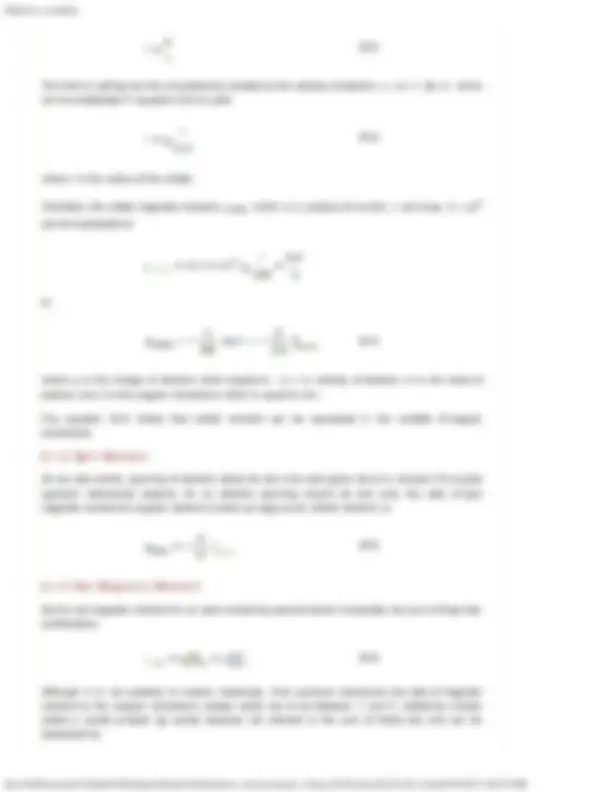
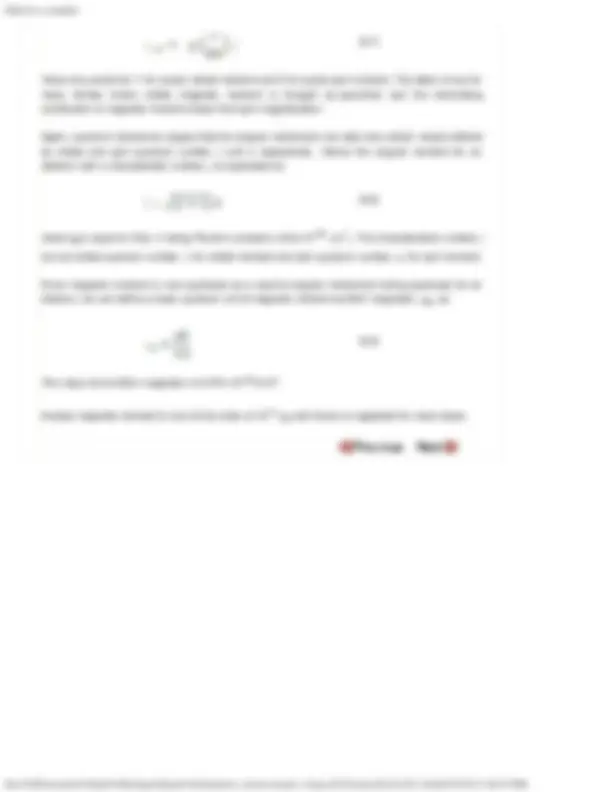
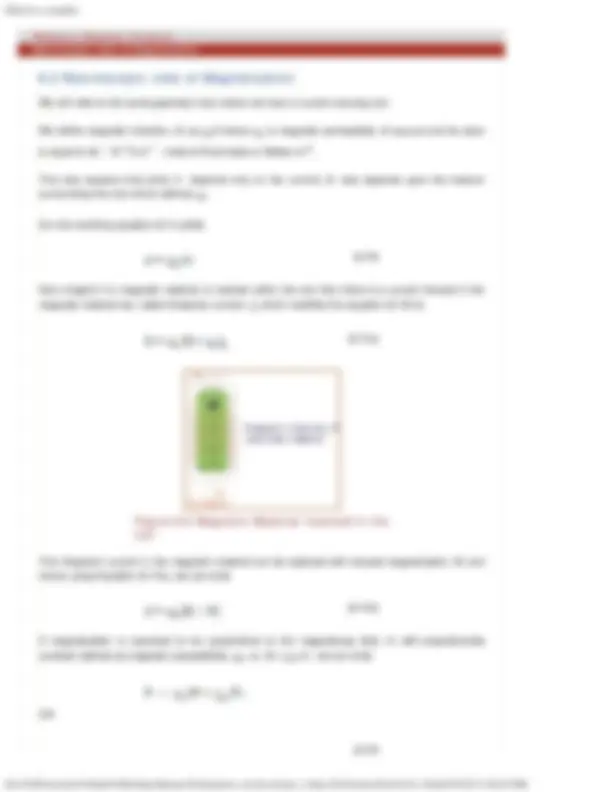
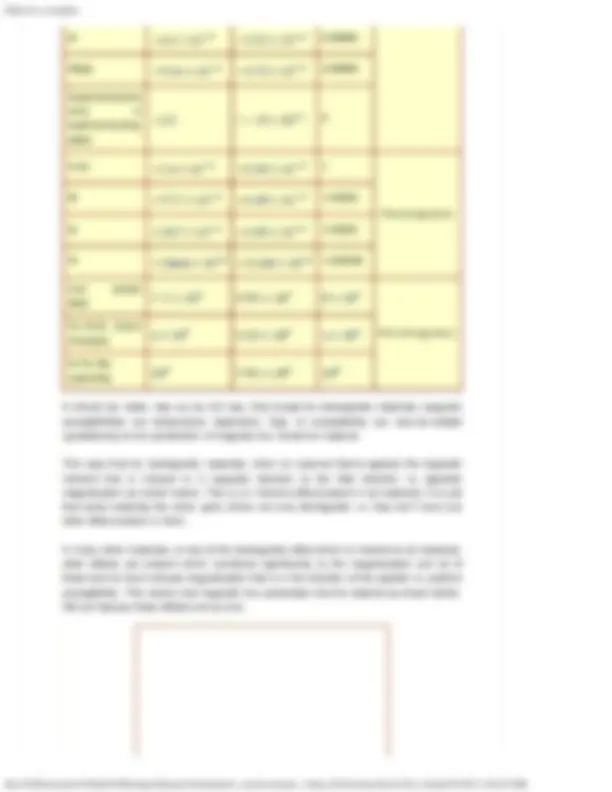
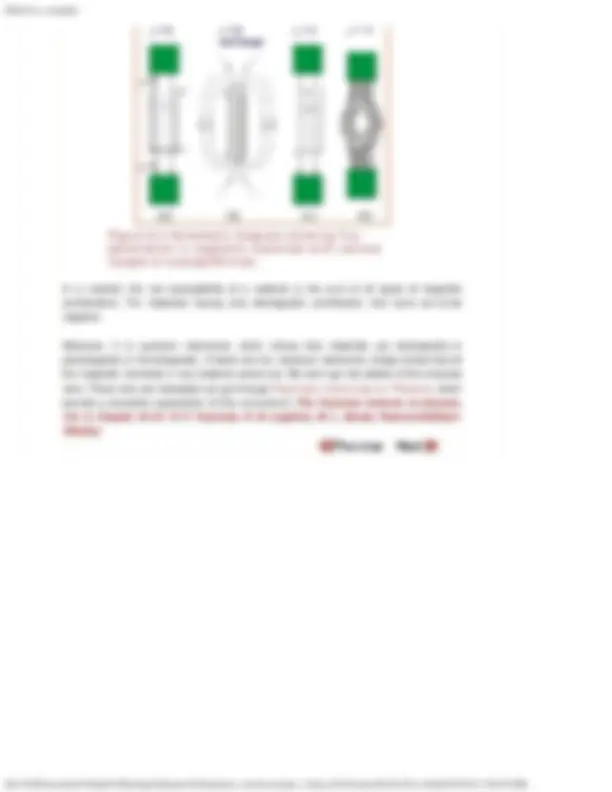
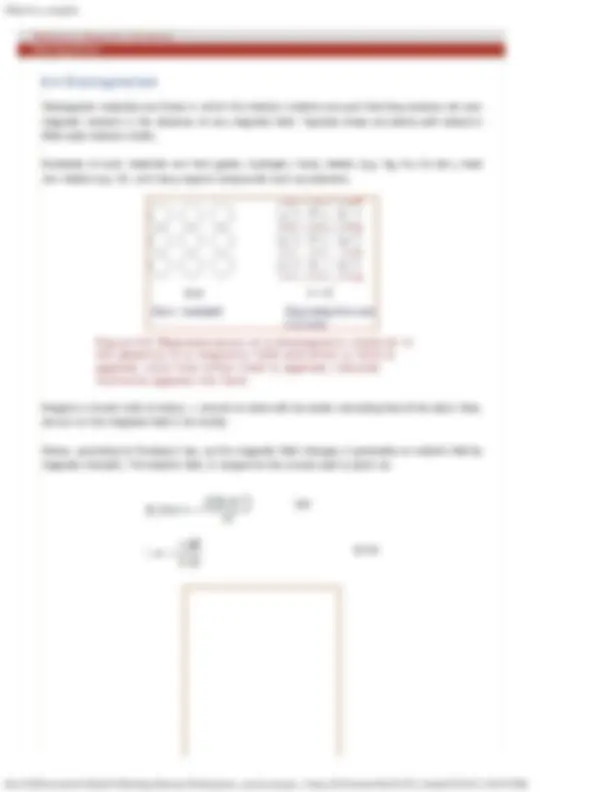
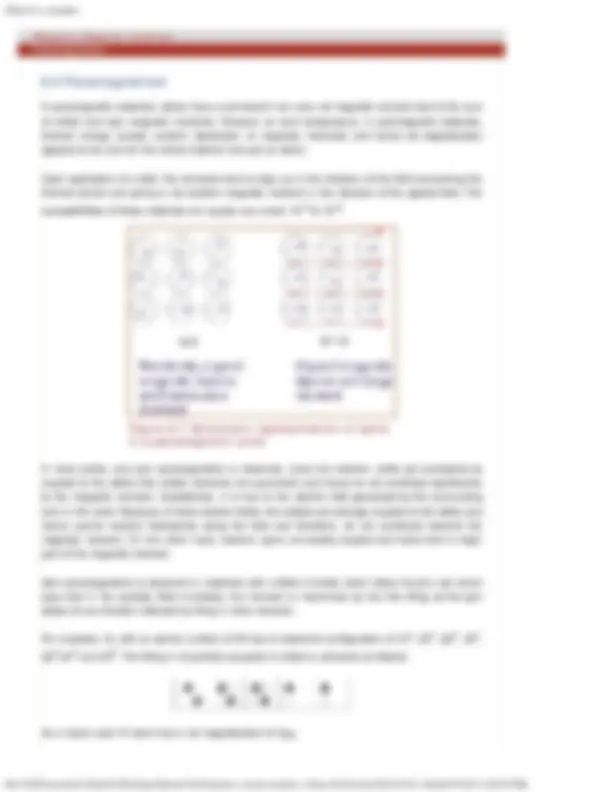
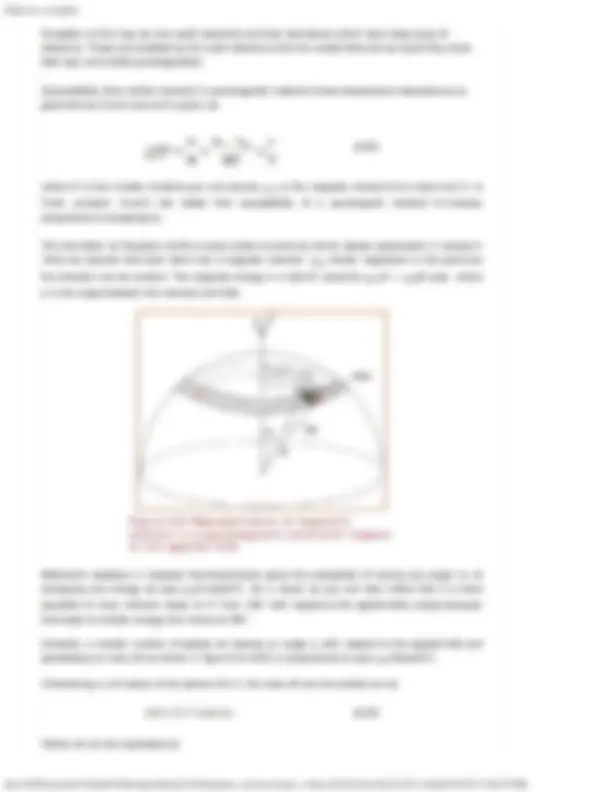
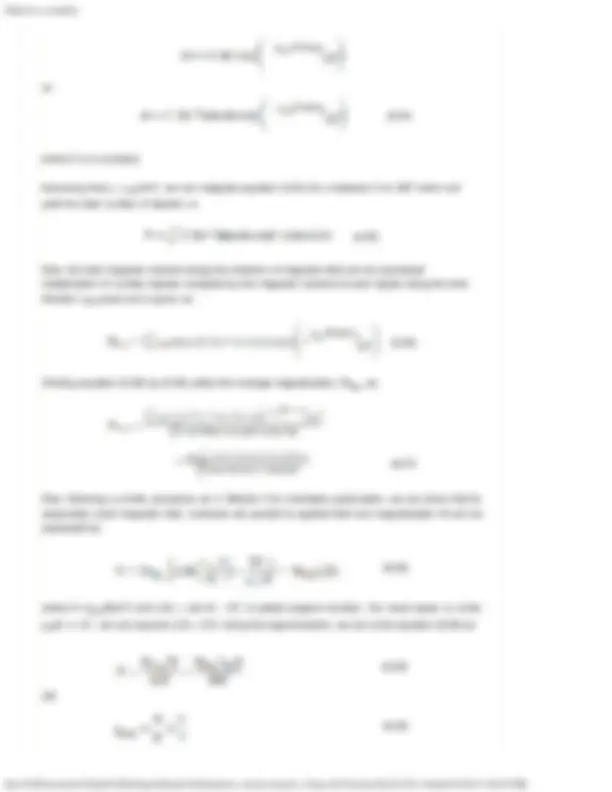
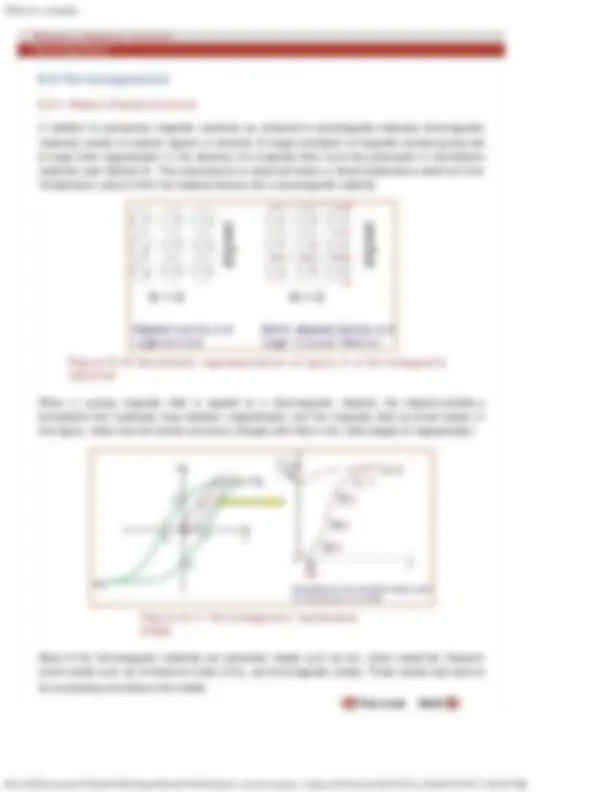
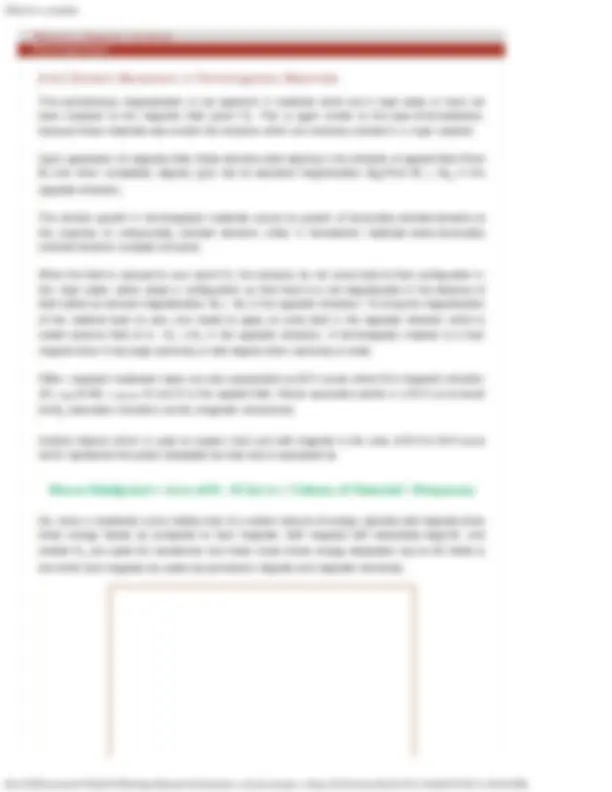
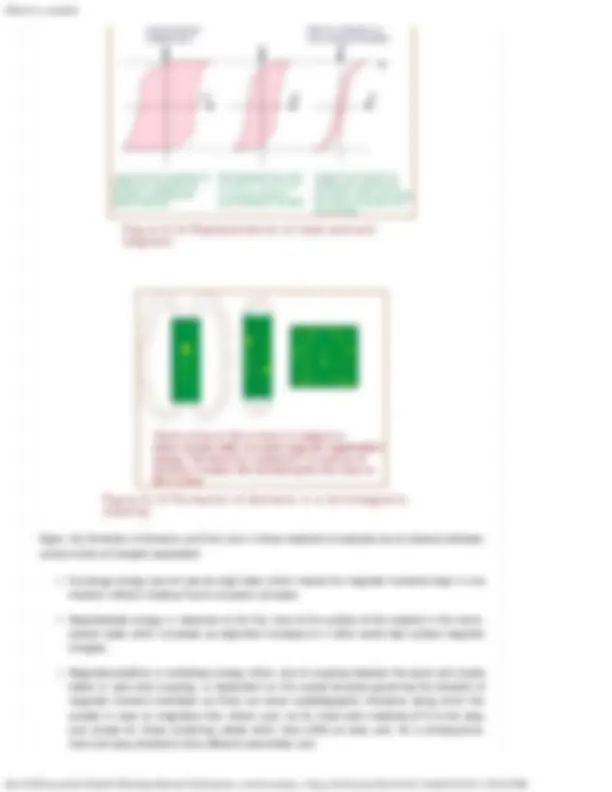
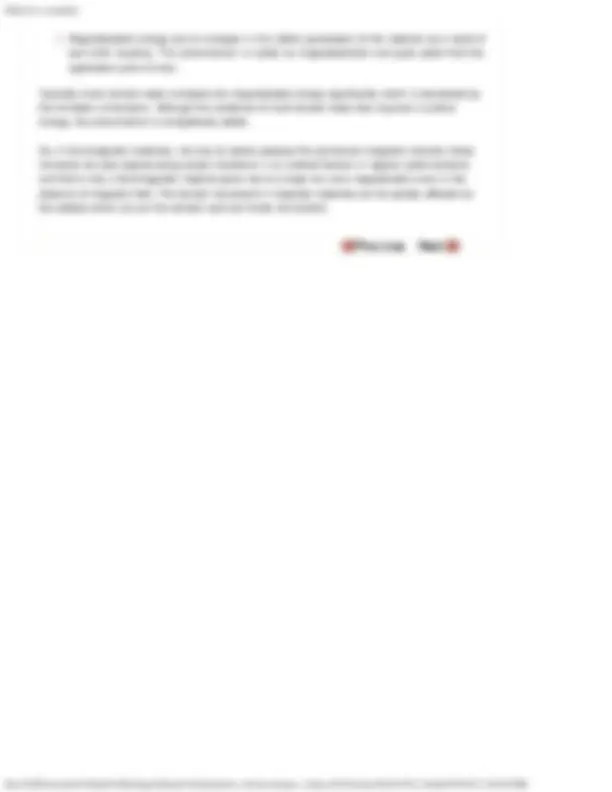
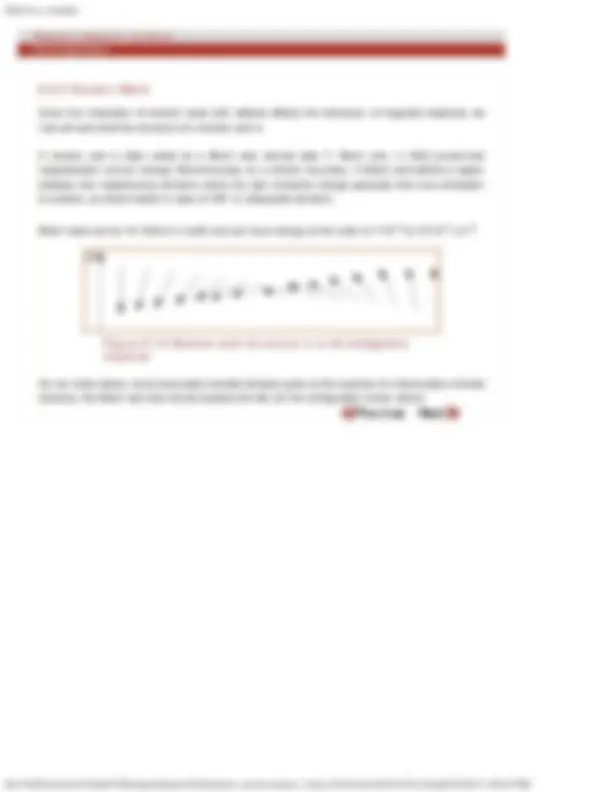
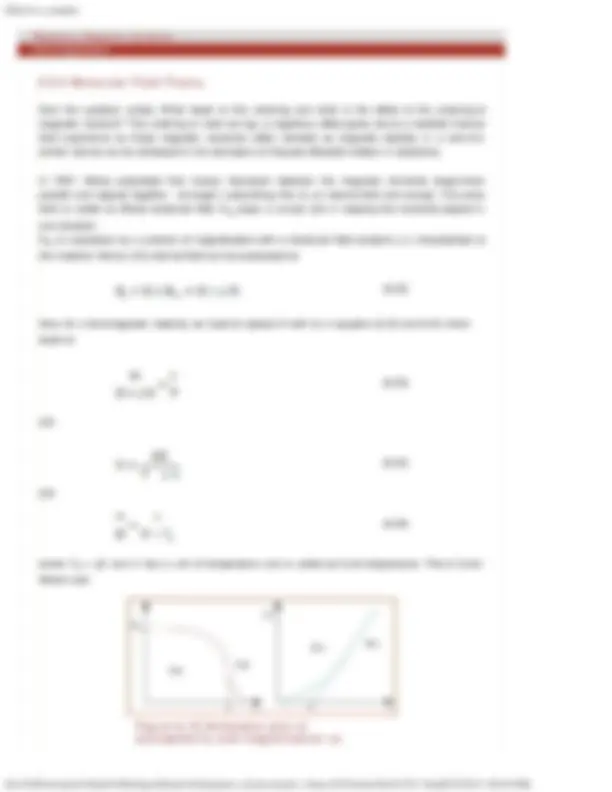
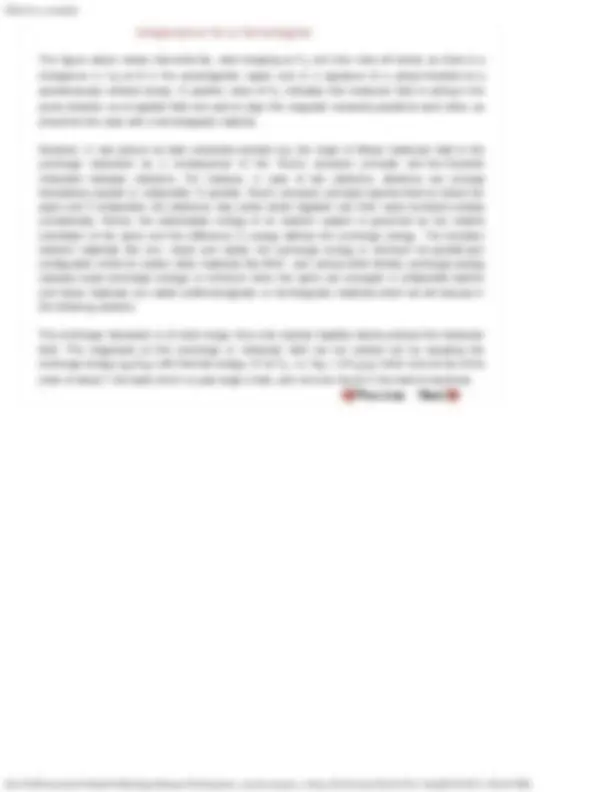
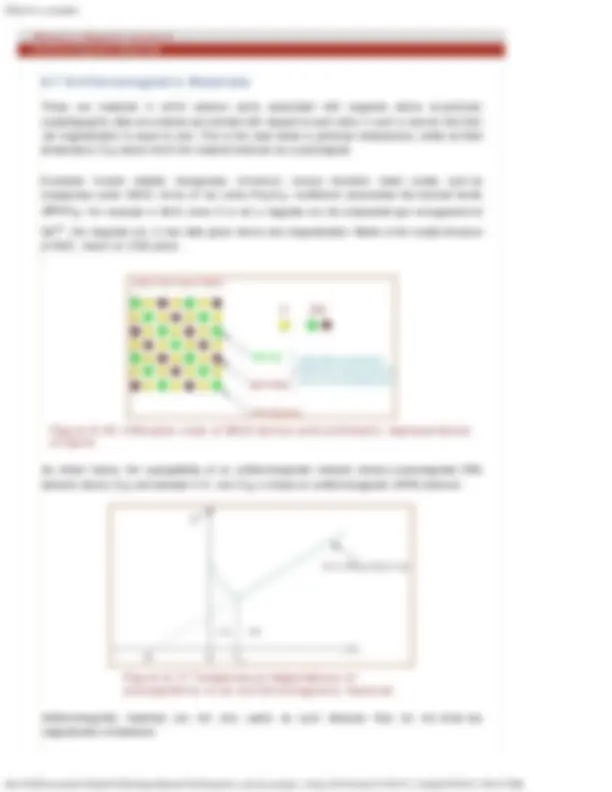

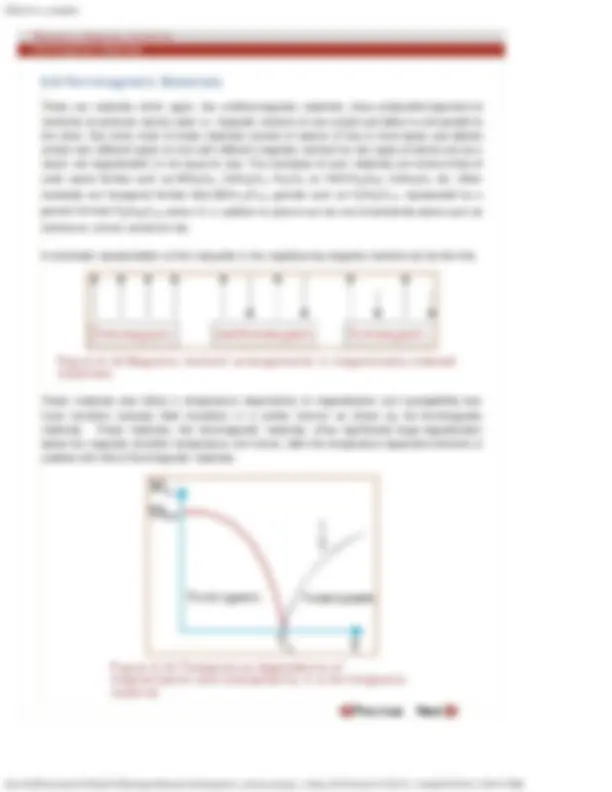
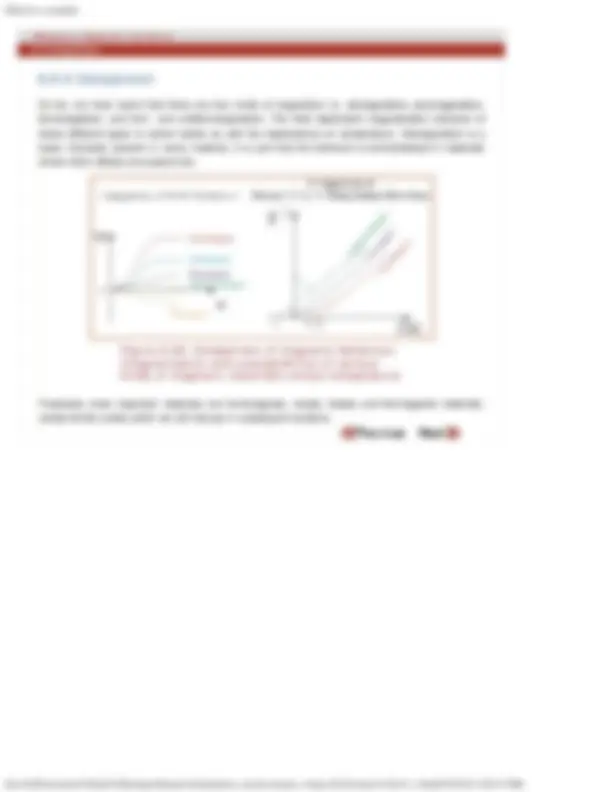
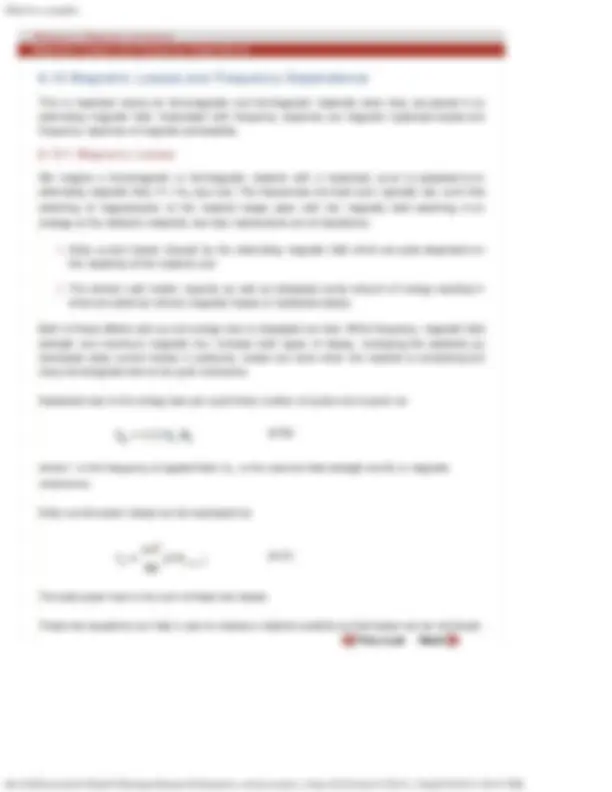
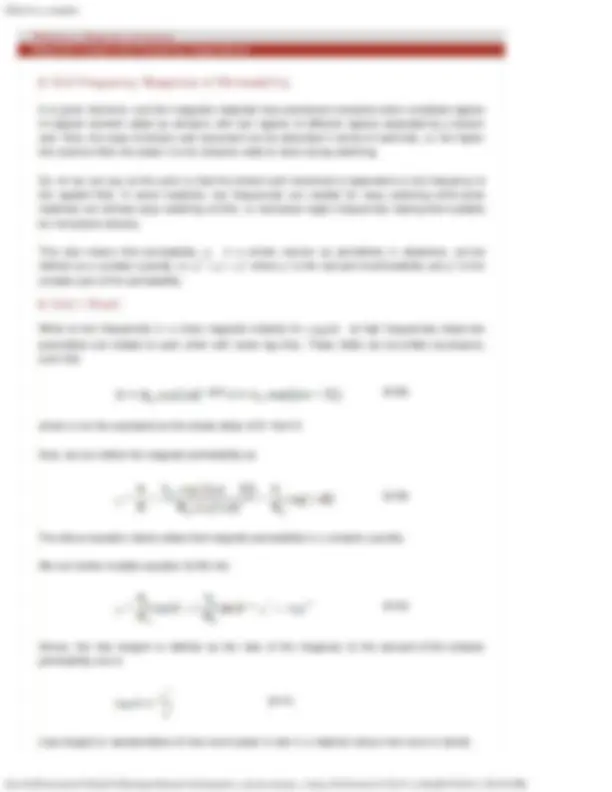

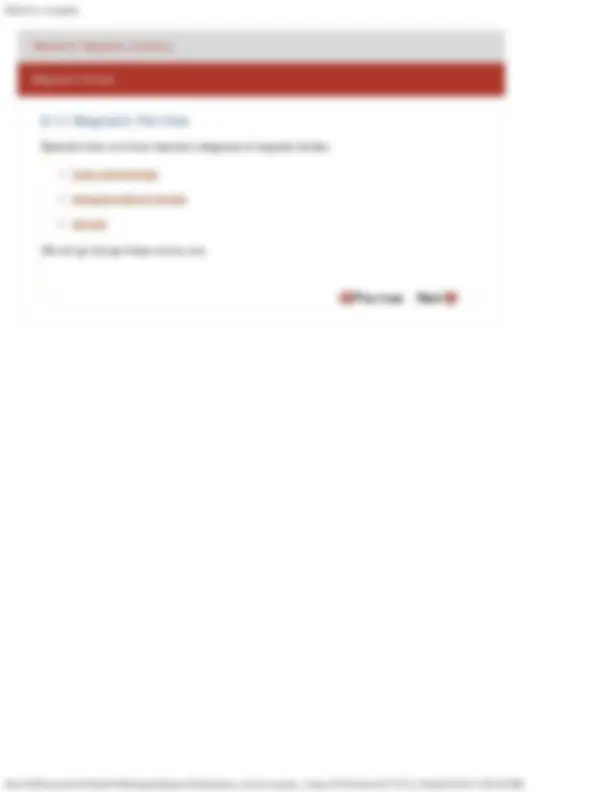
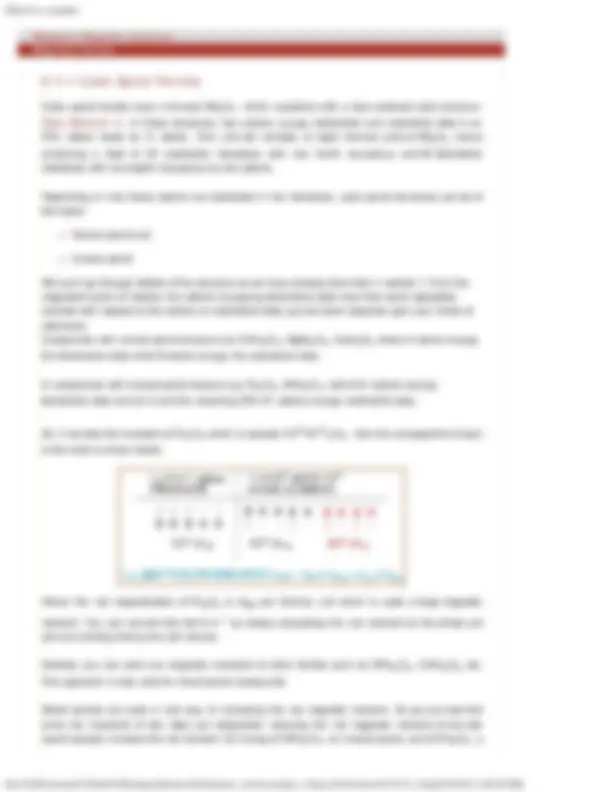

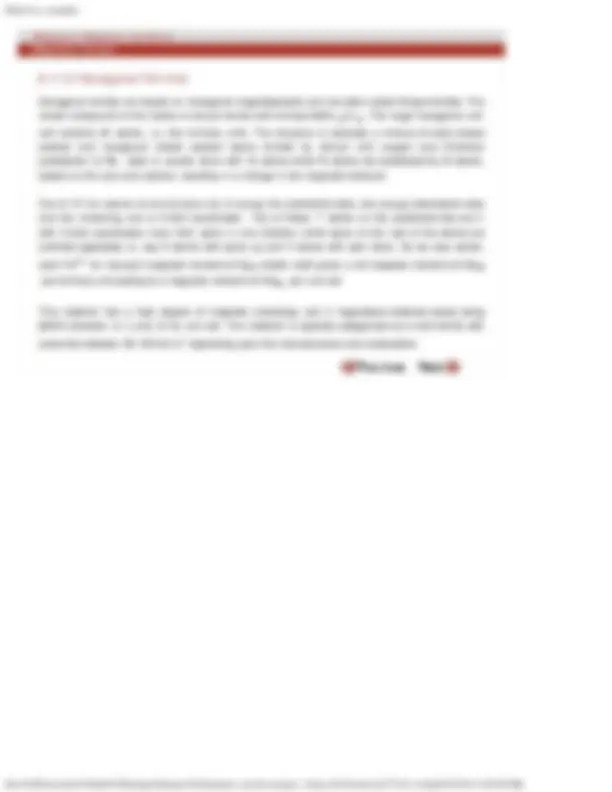
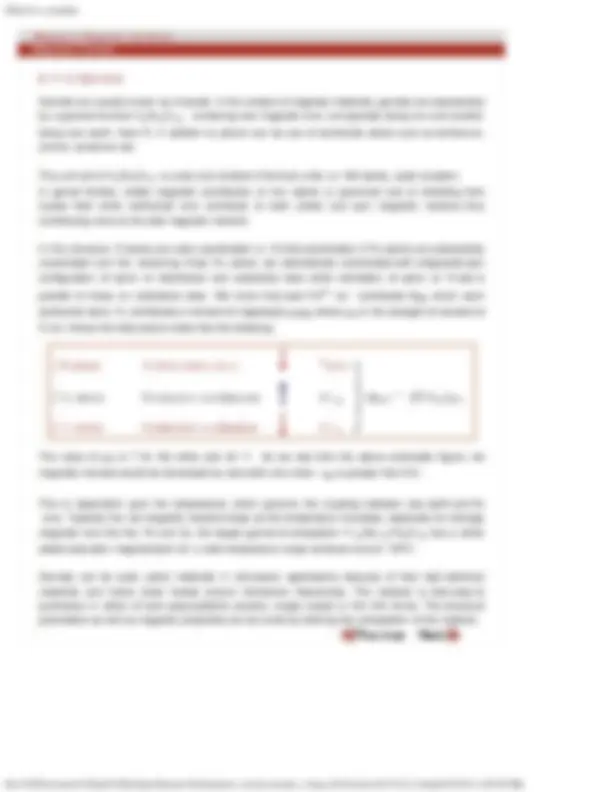

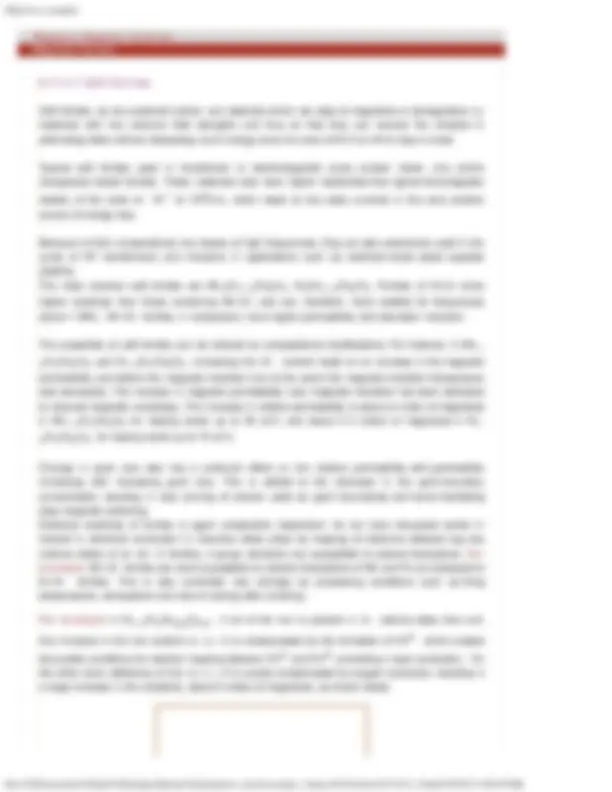
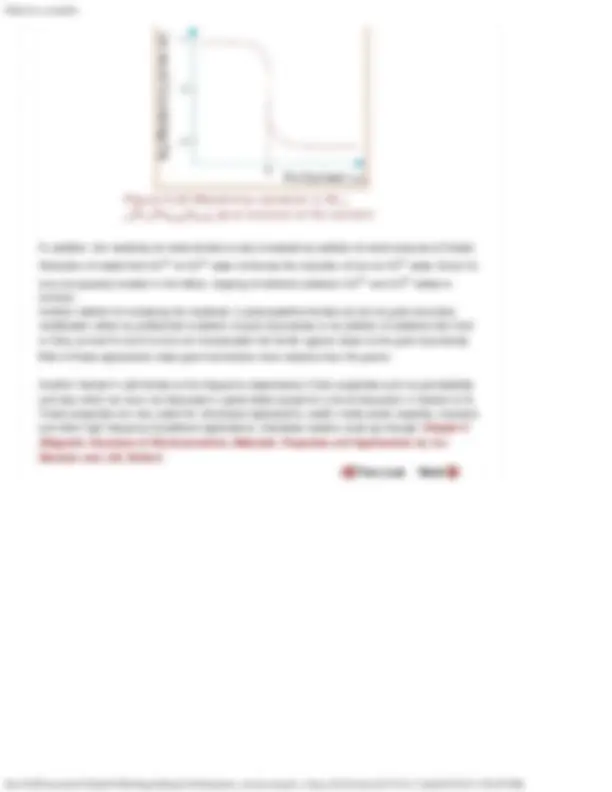
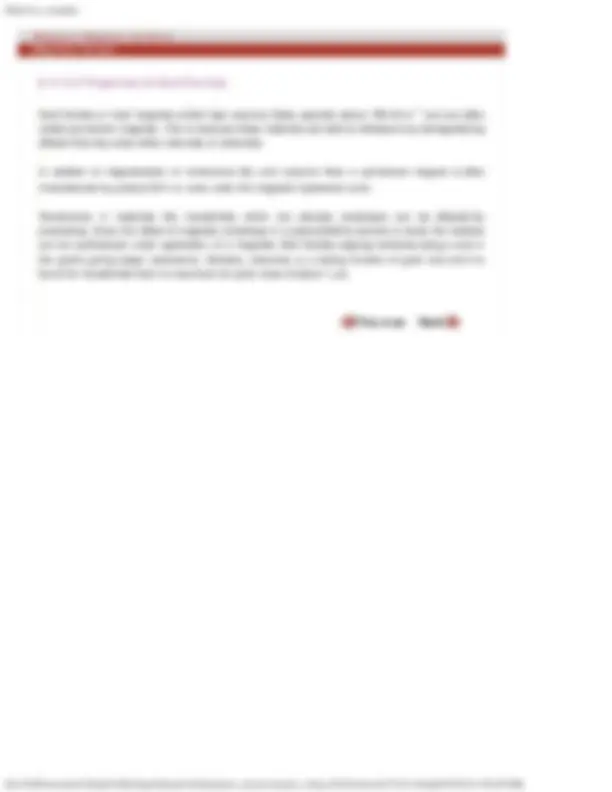
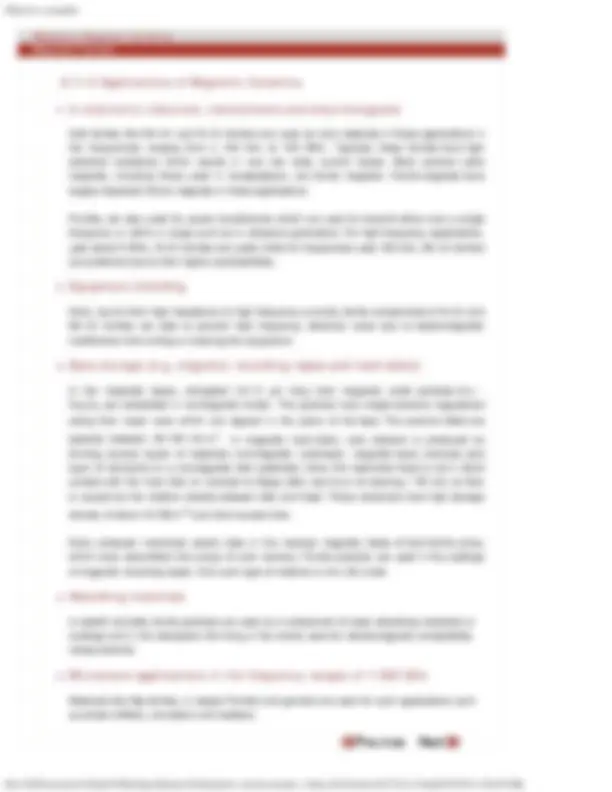
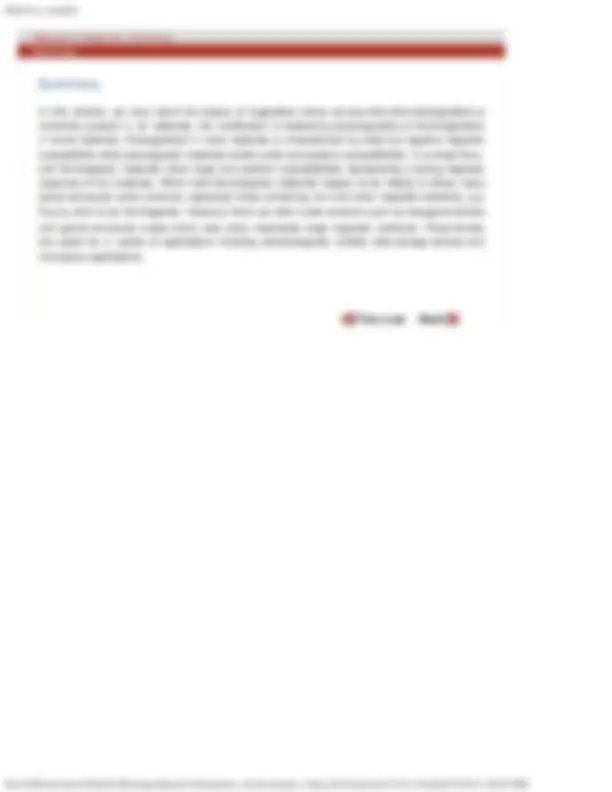


Study with the several resources on Docsity

Earn points by helping other students or get them with a premium plan


Prepare for your exams
Study with the several resources on Docsity

Earn points to download
Earn points by helping other students or get them with a premium plan
Community
Ask the community for help and clear up your study doubts
Discover the best universities in your country according to Docsity users
Free resources
Download our free guides on studying techniques, anxiety management strategies, and thesis advice from Docsity tutors
The main points are: Magnetic Ceramics, Magnetic Moments, Macroscopic View of Magnetization, Classification of Magnetism, Diamagnetism, Paramagnetism, Ferromagnetism, Antiferromagnetic Materials, Magnetic Losses, Magnetic Ferrites
Typology: Study notes
1 / 42

This page cannot be seen from the preview
Don't miss anything!



































Magnetic ceramics are important materials for a variety of applications such data storage, tunnel junctions, spin valves, high frequency applications etc. These materials possess extra-ordinary properties such as strong magnetic coupling, low loss characteristics and high electrical resistivity which is often related to their structure and composition. Depending upon the type of application, based on the knowledge of materials, one can choose appropriate material.
To build an understanding, in the following sections, we will first have a brief look at the basics of magnetic properties, followed by various types of magnetism in materials and key characteristics and differences. This will be followed by a discussion on magnetic ceramics with emphasis on some of the key applications.
Principles of Electronic Ceramics, by L. L. Hench and J. K. West, Wiley
Electroceramics: Materials, Properties, Applications, by A. J. Moulson and J. M. Herbert, Wiley
Magnetism in materials is crudely explained as mutual attraction between two pieces of a material, say iron or iron ore. There are various microscopic mechanisms of magnetism in materials which are shown later. The strength of magnetism is quantitatively judged by a quantity called as ‘magnetic moment’. This magnetic moment should not be confused with dipole moment as we learnt in Module 4.
The major contributors of magnetic moment in a material are
Motion of electrons in an orbit of an atom. Orbital moment can be related to the current flowing in a loop of a wire of zero (negligible) resistance.
Spinning of electron around it own spin axis gives rise to a moment.
Nuclear magnetic moment due to nuclei.
The first two contributions are quite significant and contribute to most of the magnetic character of a material while the third component, nuclear magnetic moment, is rather insignificant in the context of most magnetic materials of practical interest and can be neglected.
According to Ampere’s law, when a current flows through a coil, it gives rise to a magnetic field in a direction perpendicular to the plane of the loop. The field is related to the current by
where N is the number of loops per unit length of the coil, I is the current in Amperes and H is the induced magnetic field in Ampere per m i.e. A.m -^.
Now based on classical physics, the current, I , is nothing but charge per unit time and is expressed as
Value of g would be 1 for purely orbital moment and 2 for purely spin moment. The latter is true for many ferrites where orbital magnetic moment is thought as quenched and the dominating contribution to magnetic moment arises from spin magnetization.
Again, quantum mechanics argues that the angular momentum can take only certain values defined by orbital and spin quantum number, I and s respectively.. Hence the angular moment for an electron with a characteristic number, j is expressed as
where is equal to h/2p;; h being Planck’s constant (=6.6×10 -34^ J.s 1 ). The characteristics number j
can be orbital quantum number, l , for orbital moment and spin quantum number, s , for spin moment.
Since magnetic moment is now quantized as a result of angular momentum being quantized, for an electron, we can define a basic quantum unit of magnetic moment as Bohr magneton, μ (^) B , as
The value of one Bohr magneton is 9.274×10 -24^ A.m 2.
Nuclear magnetic moment is only of the order of 10 -3^ μ^ B and hence is neglected for most cases.
We will refer to the same geometry here where we have a current carrying coil.
We define magnetic induction, B , as μ 0 H where μ 0 is magnetic permeability of vacuum and its value is equal to 4p * 10 -7^ H.m^ -1^. Units of^ B^ are tesla or Weber.m^ -^.
This also explains that while H depends only on the current, B also depends upon the medium surrounding the wire which defines μ 0.
So now rewriting equation (6.1) yields
Now imagine if a magnetic material is inserted within the coil, then there is a current induced in the magnetic material too, called Ameprian current, I (^) a which modifies the equation (6.10) to
(6.11a)
This Amperain current in the magnetic material can be replaced with induced magnetization, M, and hence using Equation (6.11a), we can write
(6.11b)
If magnetization is assumed to be proportional to the magnetizing field, H , with proportionality constant defined as magnetic susceptibility, χm i.e. M =^ χm .H,^ we can write
Magnetic materials can be classified based on the values of magnetic susceptibility.
Materials with negative susceptibility are diamagnetic (χm < 1). Most diamagnetic materials show very small negative susceptibility except superconductors in superconducting effect when χm is equal to 1 which is very useful for applications such as magnetic levitation.
Materials with positive susceptibility are either paramagnetic, ferromagnetic or ferrismagnetic (χm > 1). Susceptibility is positive but very small for paramagnetic materials but can be very large for ferro- and ferri-magnetic materials.
Susceptibility values of some of the common materials are provided below. (Reference:Electronic Properties of Materials, R.E. Hummel, Springer).
Bi 0.
Diamagnetic
Be 0.
Ag 0.
Au 0.
Ge 0.
Cu 0.
Si 0.
Water 0.
Superconductors (only in superconducting state)
ß-Sn 1
Paramagnetic
Al 1.
Pt 1.
Low carbon steel
Ferromagnetic Fe-3%Si (Grain Oriented)
Ni-Fe-Mo superalloy
It should be noted, also as we will see, that except for diamagnetic materials, magnetic susceptibilities are temperature dependent. Sign of susceptibility can also be related (qualitatively) to the penetration of magnetic flux inside the material.
This says that for diamagnetic materials, when an external field is applied, the magnetic moment that is induced is in opposite direction to the field direction i.e. opposite magnetization as shown below. This is an inherent effect present in all materials. It is just that some materials like silver, gold, silicon are only diamagnetic i.e. they don’t have any other effect present in them.
In many other materials, on top of the diamagnetic effect which is inherent to all materials, other effects are present which contribute significantly to the magnetization and all of these tend to have induced magnetization that is in the direction of the applied i.e. positive susceptibility. This means that magnetic flux penetrates into the material as shown below. We will discuss these effects one by one.
Diamagnetic materials are those in which the electron motions are such that they produce net zero magnetic moment in the absence of any magnetic field. Typically these are atoms with closed or filled outer electron shells.
Examples of such materials are inert gases, hydrogen, many metals (e.g. Ag, Au, Cu etc.), most non-metals (e.g. Si) and many organic compounds such as polymers.
Imagine a circular orbit of radius, r , around an atom with its center coinciding that of the atom. Now, we turn on the magnetic field in its vicinity.
Hence, according to Faraday’s law, as the magnetic field changes, it generates an electric field by magnetic induction. The electric field, E , tangent to the circular path is given as
This electric field produces a torque equivalent to -eE.r (i.e. F.r) which must be equal to the rate of change of angular momentum, J , i.e.
Two minuses cancel each other. Now integrating with respect to time with zero field, we get
This expression represents the extra angular momentum provided to the electrons when the field is applied.
Now, since the motion of electron is taking place in the orbits, the change in magnetic moment (Δμ (^) m ) which is orbital in nature is given as
Replacing B = μ 0 H ,^ we get
For atoms with spherical symmetry, , hence,
In paramagnetic materials, atoms have a permanent non-zero net magnetic moment due to the sum of orbital and spin magnetic moments. However at room temperature, in paramagnetic materials, thermal energy causes random distribution of magnetic moments and hence net magnetization appears to be zero for the whole material (not just an atom).
Upon application of a field, the moments tend to align up in the direction of the field overcoming the thermal barrier and giving a net positive magnetic moment in the direction of the applied field. The susceptibilities of these materials are usually very small, 10 -3^ to 10 -^.
In most solids, only spin paramagnetism is observed, since the electron orbits are considered as coupled to the lattice (the orbital moments are quenched) and hence do not contribute significantly to the magnetic moment. Qualitatively, it is due to the electric field generated by the surrounding ions in the solid. Because of these electric fields, the orbitals are strongly coupled to the lattice and hence cannot reorient themselves along the field and therefore, do not contribute towards the magnetic moment. On the other hand, electron spins are weakly coupled and hence form a major part of the magnetic moment.
Spin paramagnetism is observed in materials with unfilled d-shells which follow Hund’s rule which says that in the partially filled d-orbitals, the moment is maximized by the first filling all the spin states of one direction followed by filling in other direction.
For example, Ni, with an atomic number of 28 has an electronic configuration of 1s 2 , 2s 2 , 2p 6 , 3s 2 , 3p 6 ,4s 2 and 3d 8. The filling in of partially occupied d-orbital is achieved as follows:
As a result, each Ni atom has a net magnetization of 2μ (^) B.
Exception to this may be rare-earth elements and their derivatives which have deep-lying 4f- electrons. These are shielded by the outer electrons from the crystal field and as result they show both spin and orbital paramagnetism.
Susceptibility (from orbital moment) in paramagnetic material shows temperature dependence as governed by Curie’s law and is given as
where N is the number of atoms per unit volume, μ (^) m is the magnetic moment of an atom and C is
Curie constant. Curie’s law states that susceptibility of a paramegntic material is inversely proportional to temperature.
The derivation for Equation (6.22) is quite similar to what we did for dipolar polarization in module 4 .Here we assume that each atom has a magnetic moment μ (^) m whose magnitude is the same but
the direction can be random. The magnetic energy in a field B would be μ (^) m .B = -μ (^) m B cosa where
a is the angle between the moment and field.
Boltzmann statistics in classical thermodynamics gives the probability of having any angle i.e. of occupying any energy as exp(-μ (^) m H.cosa/kT). As a result, as you can also notice that it is more plausible to have moment closer to 0° than 180° with respect to the applied field, simply because that leads to smaller energy than those at 180°.
Consider a smaller number of dipoles dn making an angle a with respect to the applied field and penetrating an area dA as shown in figure 6.8 which is proportional to exp(-μ (^) m Hcosa/kT)
Considering a unit radius of the sphere (R=1), the area dA can be worked out as
(6.23)
Hence dn can be expressed as
where Curie constant C = (Nμ (^) m^2 μ 0 )/3k.
Equations (6.29 and 6.30) show that induced magnetization is proportional to the applied field and is larger at lower temperature. The same result can also be shown using quantum mechanism which is not a part of this course.
Quantum mechanics, for any characteristic number j (could be combined for both orbital and spin moments or only s for spin moments), also gives
which is similar to (6.29) with. Here, g is Landé-g factor.
The theoretically derived and experimentally obtained values of magnetic moment for a few selected magnetic ions are given below and here, you can see while for rare earth ions total magnetic moment value gives a much better estimate, for transition elements, spin only magnetism in a better estimate ( Reference: Introduction to Solid State Physics, C. Kittel ).
Mn 3+^ 0.00^ 4.90^ 4.
Mn 2+^ ,
Fe 3+^
Fe 2+^ 6.70^ 4.90^ 5.
Co 2+^ 6.63^ 3.87^ 4.
Ni 2+^ 5.59^ 2.83^ 3.
This spontaneous magnetization is not apparent in materials which are in virgin state or have not been exposed to the magnetic field (point O). This is again similar to the case of ferroelectrics, because these materials also contain the domains which are randomly oriented in a virgin material.
Upon application of magnetic field, these domains start aligning in the direction of applied field (Point B) and when completely aligned, give rise to saturation magnetization, M (^) S (Point B) (- M (^) S in the opposite direction).
The domain growth in ferromagnetic materials occurs by growth of favourably oriented domains at the expense of unfavourably oriented domains unlike in ferroelectric materials where favourably oriented domains nucleate and grow.
When the field is reduced to zero (point C), the domains do not come back to their configuration in the virgin state; rather adopt a configuration so that there is a net magnetization in the absence of field called as remnant magnetization, M (^) r ( -M (^) r in the opposite direction). To bring the magnetization of the material back to zero, one needs to apply an extra field in the opposite direction which is called coercive field of is - H (^) c. (+H^ c in the opposite direction). A ferromagnetic material is a hard magnet when it has large coercivity or soft magnet when coercivity is small.
Often, magnetic hysteresis loops are also represented as B-H curves where B is magnetic induction (B = μ 0 (H+M) = μ 0 μ (^) r H) and H is the applied field. Hence equivalent points in a B-H curve would be B (^) s (saturation induction) and B (^) r (magnetic remanence).
Another feature which is used to explain hard and soft magnets is the area of B-H or M-H curve which represents the power dissipated as heat and is expressed as
So, since a hysteresis curve implies loss of a certain amount of energy, typically soft magnets show lower energy losses as compared to hard magnets. Soft magnets with reasonably large M (^) r and smaller H (^) c are useful for transformer and motor cores where energy dissipation due to AC fields is low while hard magnets are useful as permanent magnets and magnetic memories.
Again, the formation of domains and their size in these materials is basically due to balance between various kinds of energies associated:
Exchange energy (we will see its origin later) which makes the magnetic moments align in one direction without violating Pauli’s exclusion principle;
Magnetostatic energy in response to the flux lines at the surface of the material in the mono- domain state which increases as alignment increases or in other words high surface magnetic charges;
Magnetocrystalline or anisotropy energy which, due to coupling between the spins and crystal lattice or spin-orbit coupling, is dependent on the crystal structure governing the direction of magnetic moment orientation as there are some crystallographic directions along which the sample is easy to magnetize than others such as for most cubic materials [111] is the easy axis except for those containing cobalt which have [100] as easy axis. As a consequence, hard and easy directions have different coercivities; and